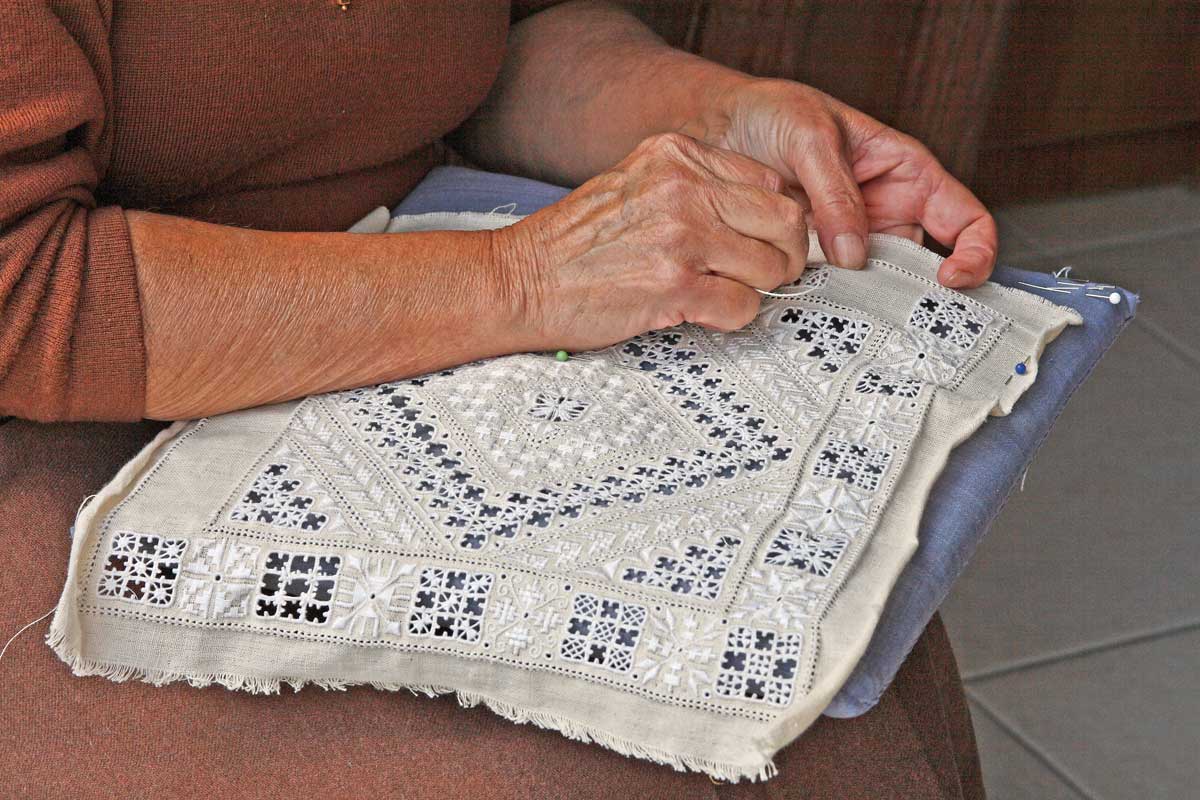


Embroidered lace:
Undoubtedly the most famous handicraft of North Cyprus is the embroidery lace, known as the Lefkaritika net. This art dates back to the 15th century, It has been inscribed on UNESCO since the fall of 2009. During the occupation of Cyprus in 1570-1489, the Venetians inspired the Lefkara embroidery net. Local women got ideas from delicate embroidery on their clothes, and they put their embroideries on the net. been white embroidery on wedding dresses. Traditionally, Cypriot girls had to prepare an extensive set of lace embroidery for the Embroidery net has always been a part of every Cypriot life because there have always in wedding day shows. In this way, art has been passed down from mothers to their daughters for centuries. For centuries, women from the villages and small towns of North Cyprus have sat side by side, skillfully embroidering exquisite embroidery on linen fabrics. Cypriot lace is used for tablecloths and other kitchen decorations and is made with intricate geometric patterns that are perfectly identical on both sides.
Wicker weaving:
Wicker weaving is another traditional art of the island people. You can not ignore the wicker baskets of North Cyprus. The bright and cheerful designs of these mat weavers in shops and restaurant walls all over the country attract your attention. Mat weaving in North Cyprus is a unique art, as each weaver has his or her own weaving pattern. Cypriotsو sometimes uses tree trunks, leaves, and twigs in mat weaving, and sometimes cut them into thin strips to make items such as baskets, bread trays, brooms, and even jewelry box.
Embroidery:
Delicate and colorful embroidery is more common in the Lapitus region. Weavers keep this ancient tradition alive. They embroider on linen fabric, and you can count the threads one by one.
The fabric is fastened to circular wooden frames called kasnak and then the outline is embroidered with brown or black French silk thread. This type of embroidery is unique and different.
Traditional embroidery in North Cyprus is known as “hesap” which means calculation. This name is used because when decorating them with different patterns, each thread is counted one by one.
Silk works:
Until recently, the landscape around the villages of karava and Lapitos in North Cyprus was full of mulberry trees, a popular silkworm tree. Lapta and Hisarkoy were the most important silk-producing villages. Every Turkish Cypriot family was skilled in making precious silkworm cocoons and weaving silk fabrics by turning the cocoons into yarn.
Unfortunately, the silk fabric trade in Northern Cyprus has collapsed due to foreign competition and industrialization, but with the production of decorative items from silkworm cocoons, this attractive industry remains. Today in North Cyprus silk cocoons are used to decorate fabrics and clothing. Interestingly, the color of the cocoons varies from country to country, in Turkey is white and in North Cyprus is yellow.
Chairs made of straw:
In many handicraft shops in North Cyprus, you can find chairs made of straw. The art of weaving has generally been very popular in North Cyprus in the past. Each of these miniature chairs has a very complex texture. These chairs are very light yet durable and are still very popular among Cypriot families.
